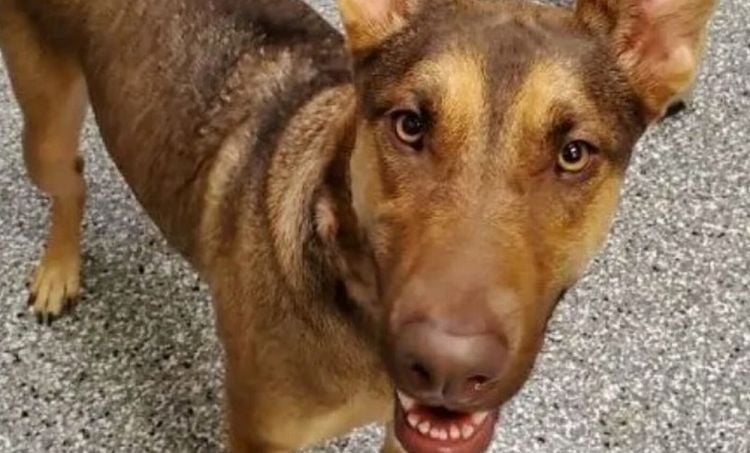15 Things To Know About Native American Dogs

Long before modern breeds took over, dogs lived and worked alongside Indigenous communities across North America. Their story runs deeper than most realize, shaped by generations of connection and purpose. Here are key insights into the unique place of Native American dogs in tribal history.
Dogs Depicted In Ancient Rock Art

Petroglyphs and pictographs across the American Southwest, notably in regions like Utah and Colorado, feature depictions of dogs. These images often illustrate dogs alongside humans in hunting scenes or as companions. Some rock art portrays dogs with distinctive coat patterns.
Spiritual Companions

Many tribes saw canines as more than pets. Beliefs in spiritual ties led tribes to include dogs in sacred rituals and ceremonies. Their interpretations varied across regions, but dogs were often viewed as more than camp followers—taking on roles as protectors, messengers, guides, or trusted companions.
Built For The Job

Early Native American dogs pulled sleds and helped with hunting. Arctic groups relied on them for transportation, and others trained them to track game or carry loads. Each tribe shaped their dogs based on what they needed most.
Smaller Than You’d Think

Ancient Native dogs didn’t resemble modern large breeds. Many were medium-sized with fox-like faces, pricked ears, and bushy tails. Though detailed measurements are scarce, their lean build helped them slip through forests and survive on limited food.
DNA Almost Erased

A 2018 study, “The Evolutionary History of Dogs in the Americas,” published in “Science,” found that pre-contact Native American dogs were almost entirely replaced after European colonization. Their genetic legacy in modern dogs is minimal. Most Native-associated breeds today are recreations based on historical traits, not direct lineage.
The Carolina Dog Story

One modern breed, the Carolina Dog, turned up in the American Southeast looking wild but genetically unique. Researchers found DNA links to ancient dogs, not just feral pets. Though not purely Native American, it’s one of the few breeds with traceable roots.
Village Dogs Still Exist

Free-roaming dogs in Native communities today aren’t always strays. They belong to households but move around freely. These canines aren’t genetically identical to ancient dogs, but many still show behaviors shaped by generations of community living—resourcefulness and independence paired with strong social connection.
They Didn’t Bark Much

Unlike today’s noisy pups, early Native dogs were described as relatively quiet. Historical accounts mention howling or growling more than barking. Their silence likely helped during hunts and made them better companions in close-knit tribal life.
Roles In Tribal Warfare And Defense

While most Native American dogs were valued as companions and hunters, some also protected communities. Certain tribes trained dogs to alert settlements of approaching strangers or enemies, and they assisted in battle by carrying supplies or staying close to warriors.
Dog Hair Was Once Spun Into Sacred Textiles

Coast Salish communities in the Pacific Northwest once raised a now-extinct woolly dog for its dense white coat. The fur was sheared and spun into yarn, then woven into blankets—sometimes mixed with goat wool for durability. These special textiles reflected the dog’s importance in everyday use.
Coydog Myths And Truths

Stories of coyotes breeding with Native dogs pop up often. While it can happen, actual coyote-dog hybrids were rare. Native dogs typically stayed within their groups. True coydogs tend to behave unpredictably and don’t thrive in domestic life.
Not Meant For Tricks

These dogs weren’t trained to fetch or rollover. Their skills focused on survival and usefulness—tracking, pulling, alerting, or hauling. Intelligence didn’t appear in games but in sharp instincts and deep loyalty to their people.
A Shared Vulnerability To New Illnesses

New diseases brought by Europeans severely affected Native dogs alongside the people they lived with. While direct records are limited, rabies and parasite-borne diseases likely spread quickly. Without immunity or treatment, many dog populations declined along with traditional ways of life.
Still Part Of Culture

Dogs remain part of Indigenous stories and cultural identity. Many tribes continue to honor them through ceremonial dances and storytelling passed down through generations. They’re more than animals—often viewed as symbols of wisdom with a presence that reflects quiet strength and deep purpose.
Trade And Exchange Of Dogs Among Indigenous Tribes

Native American tribes traded dogs with neighboring groups, allowing breeds to adapt to new climates and lifestyles. Whether as symbols of friendship or traded for goods, dogs were integral to both economic and social relationships between tribes.





